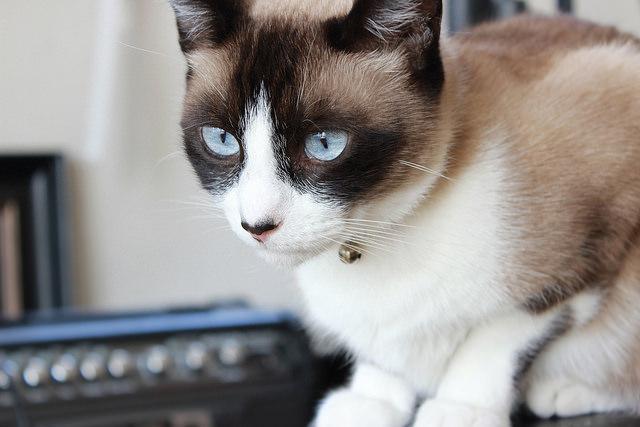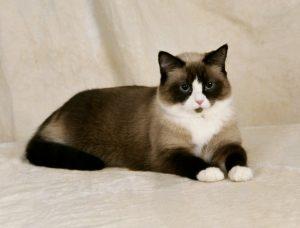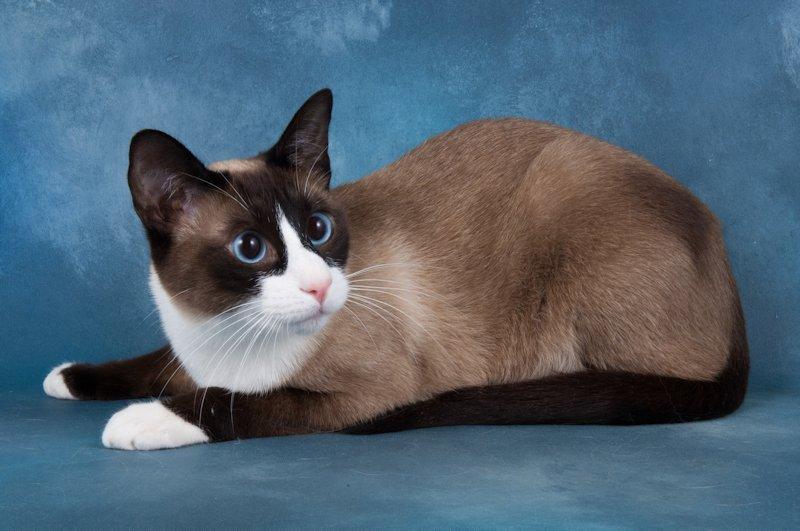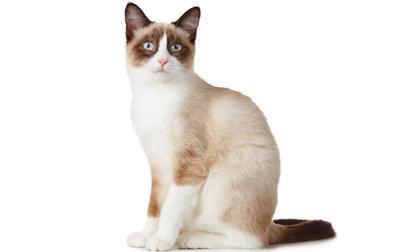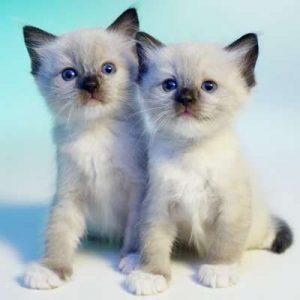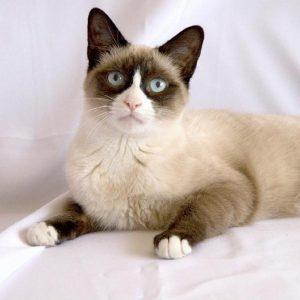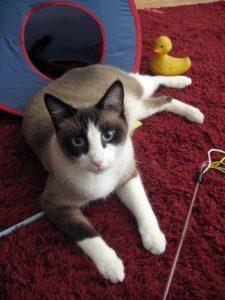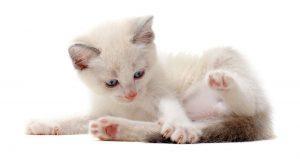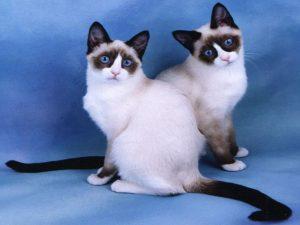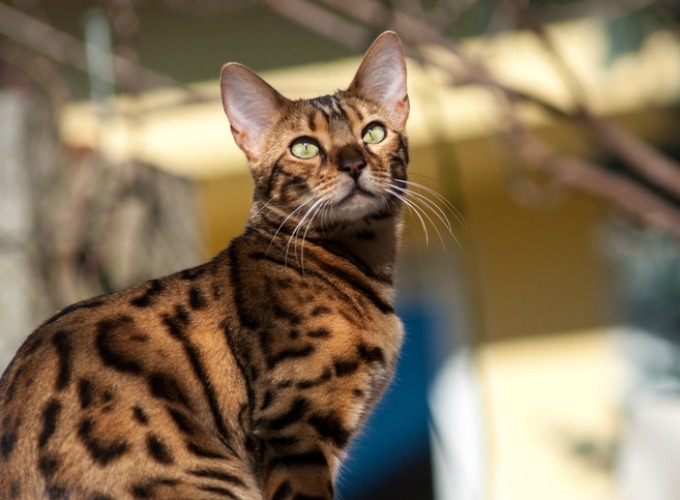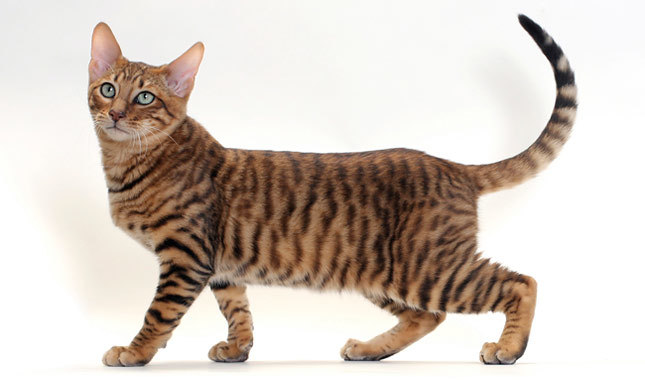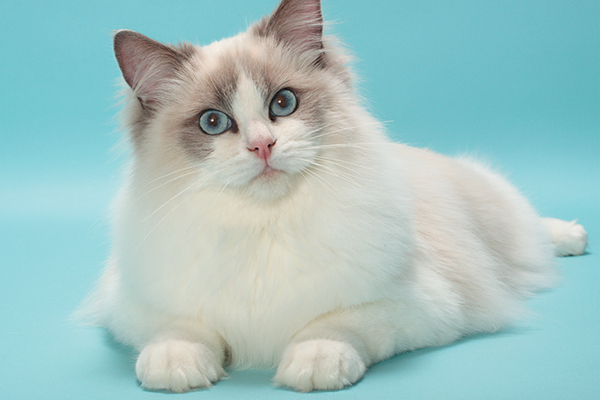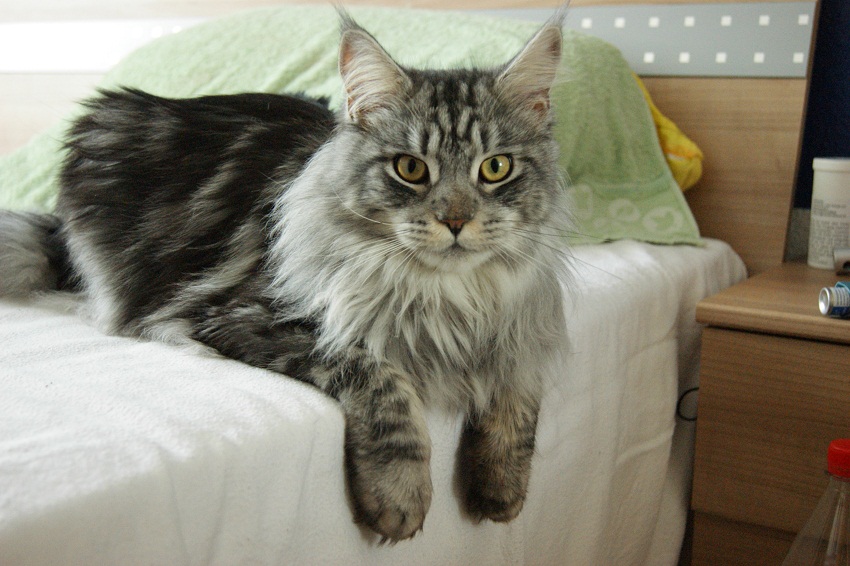The Snowshoe Cat is an American breed that is rare because of the difficulty in reproducing the colorpoint markings correctly. Due to its variable piebald gene pattern, it ‘s hard to predict the looks of its offspring, while the kittens are also born colorless with the points appearing only after 1-3 weeks.
Quick Information
Physical Appearance & Size
| Physical Characteristics | Muscular built body with strong legs & angular ears |
| Body Type | Medium |
| Weight | Male: 9-12 pounds; Female: 7-10 pounds |
| Height (size) | 9-11 inches |
Colors & Patterns
| Coat/Fur Type | Short, plush, straight, soft |
| Eye Color | Blue |
| Body Colors | Seal, blue, black, red, cream, cinnamon, fawn, tortoiseshell, tabby, tortoiseshell–tabby, chocolate, lilac |
| Tail Type | Long, straight |
| Patterns/Points | Dark color points form on ear-borders, tail, & legs (with the foreleg points that are known as ‘mittens’ & hindlegs – ‘boots’); a mask present around each eye separated by an inverted ‘V’ |
Other Characteristics
| Life Expectancy (Lifespan) | 14-19 years |
| Characteristics/Qualities | Loving, intelligent, social, active, interactive |
| Lap Cat | Yes |
| Shedding | Moderate |
| Good with Children | Yes |
| Good with Pets (Other Cats) | Yes |
| Vocalization/Noises | Average |
| Hypoallergenic | Yes |
| Attention Seeker | No |
| Country of Origin | USA (Pennsylvania) |
| Availability | Rare |
| Breed Standards | TICA, ACFA |
| Associations and Registries | Snowshoe Cat Club (USA); Snowshoe Cat Society (UK) |
History and Development
In the early 1960s’ Philadelphia, three white color point cats were born in a litter. Seeing their unique white-footed features, a breeder Dorothy Hinds-Daugherty decided to establish a new line. She began with crossing them with a tuxedo-marked American Shorthair, successfully developing a new litter bearing the famous ‘V’ facial mark. She named it the ‘Silver Lace Cat’.
Between 1960 and 1977, the interest in developing this breed started to decline, with finally just one breeder Vikki Olander (Daugherty’s acquaintance) remaining. In 1974, however, because the ‘Cat Fanciers’ Foundation’ and the ‘American Cat Association’ had already accepted it as an experimental breed, the number of registered breeders gradually began to go up, counting to almost thirty by 1989. In 1994, the TICA finally gave a ‘championship’ to the Snowshoe breed.
Temperament and Personality
- Affectionate and social, with a general sweet disposition, enjoying human company
- Comfortable with children and other fellow pets
- Loyal to the owner; intelligent enough to understand human emotions
- Does not enjoy solitude, especially if there is no other companion cat
- Moderately vocal, meows while complaining
- Likes to be touched
- Fond of water, with some individuals enjoying swimming
- Active by nature (but not restless); loves climbing
Who is the Snow Shoe Cat Good For
- People who cherish the company of intelligent and loyal pets
- Those who do not like restless cats
- Those who have children and other pets at home
Care
Their short coat makes grooming easy. Since they shed moderately, brushing them 3-4 times a week will retain the gloss and maintain hygiene.
Except for generic feline diseases like allergy, obesity, there have been no reports about any genetic or congenital conditions. Though, a few individuals have been seen developing cross eyes or kinked tail.
Are they Easy to Train
Their high intelligence level makes behavioral or trick training easy. They are particularly good at simple household works like fetching or opening doors.
Diet/Feeding
General cat diet, including high-quality dry kibble, is recommended for this breed.

